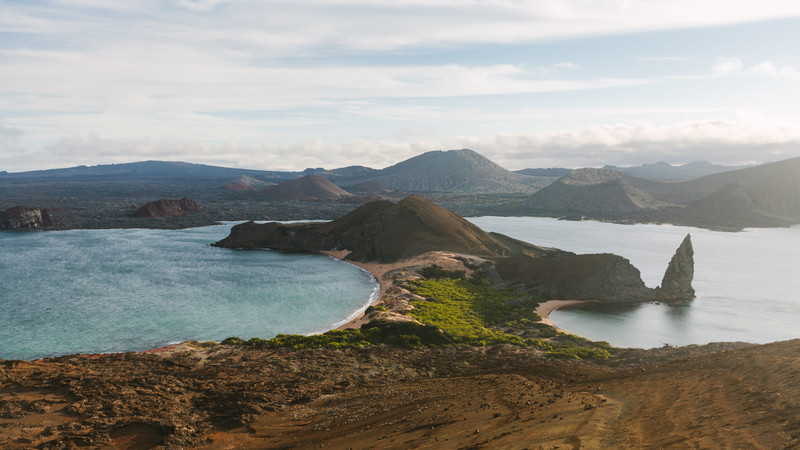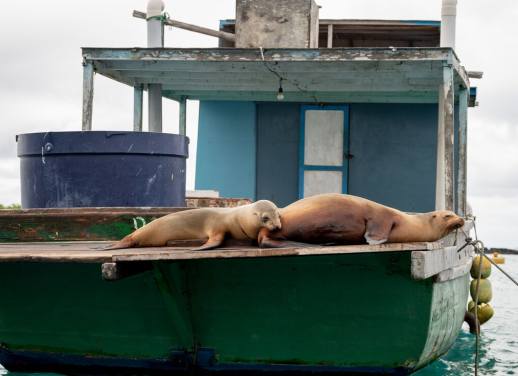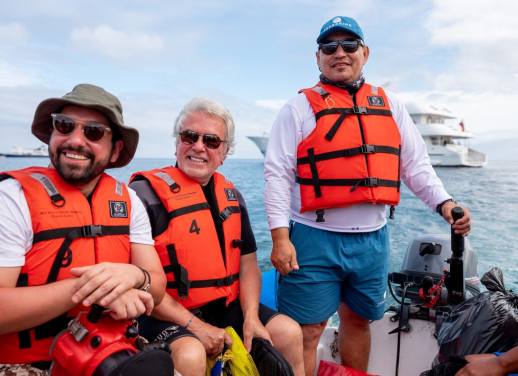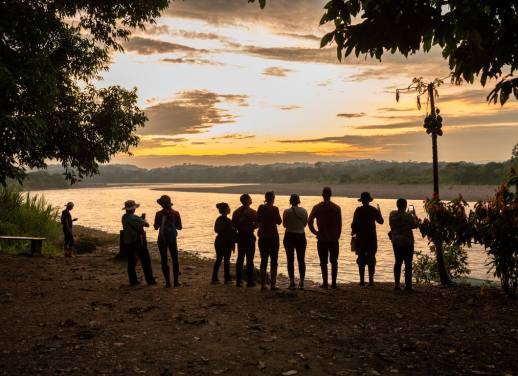No matter where you travel, there are concerns about how tourism can impact the destination. Whether that impact is overwhelming local businesses in a small port town, wearing away at hiking trails or damaging the natural environment.
Intrepid must walk the fine line between promoting must-see destinations and helping to protect an irreplaceable landmark or ecosystem. This concern is perhaps most apparent in the Galapagos Islands. Tourism to this fragile ecosystem has more than quadrupled in the last 20 years (and the local population has doubled), which means the islands have been hit with unprecedented amounts of human interference.
However, tourism can have a positive impact on the area as well. Experts agree that tourism dollars have helped fund conservation efforts in the Galapagos. And what is perhaps almost as valuable is the perspective travellers gain after visiting the islands for themselves. It’s hard to understand how small things can have a huge impact on an ecosystem until you’ve experienced that delicate balance for yourself.
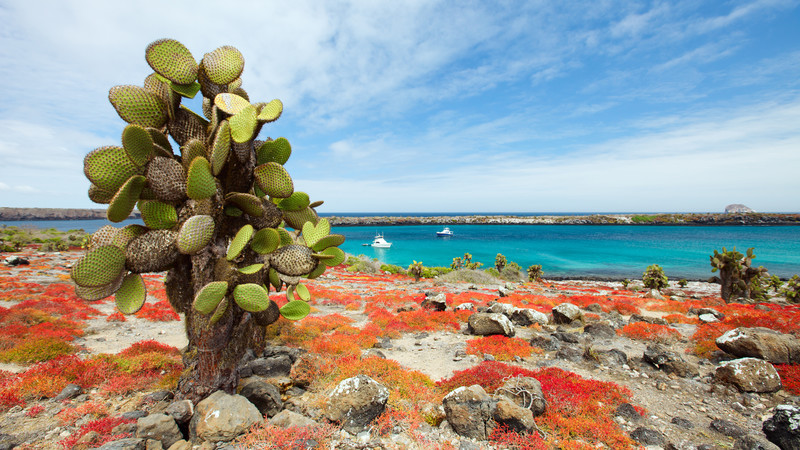
Some of the unique flora the islands have to offer
Realistically, the solution is not more or less tourism; the solution is better tourism. As a company that is focused on responsible business, we’ve made this a core tenet of how we operate. No matter where we travel, we always do it in as sustainable a manner as possible. We carbon offset all our trips, and, whenever possible, we use local accommodations, eat locally, and travel using shared or local transport.
In the Galapagos, in addition to our regular guidelines for responsible travel, we are careful to follow the regulations set out by the Galapagos Islands National Park. There are 14 rules that all visitors are expected to abide by when they visit. This helps to minimise our impact and preserve the animals’ territory, so they can continue to thrive, and so travellers in the years to come can enjoy the incredible and unique flora and fauna.
Here are seven ways Intrepid Travel maximises the benefits and minimises the negative impact travel can have when we visit the Galapagos Islands.
Small groups mean less impact
In comparison to the large cruise ships that can carry more than 100 passengers, Intrepid’s trips have 16 passengers or fewer. This reduces our travellers’ impact on the land and increases how much time they get to spend with their guide. In turn, this means the local leader has more opportunities to interact with the full group, is able to better convey the issues the islands are facing and can help ensure no one steps off the path or gets too close to the animals.
READ MORE: WHAT GOES INTO BECOMING THE WORLD’S LARGEST B CORP?
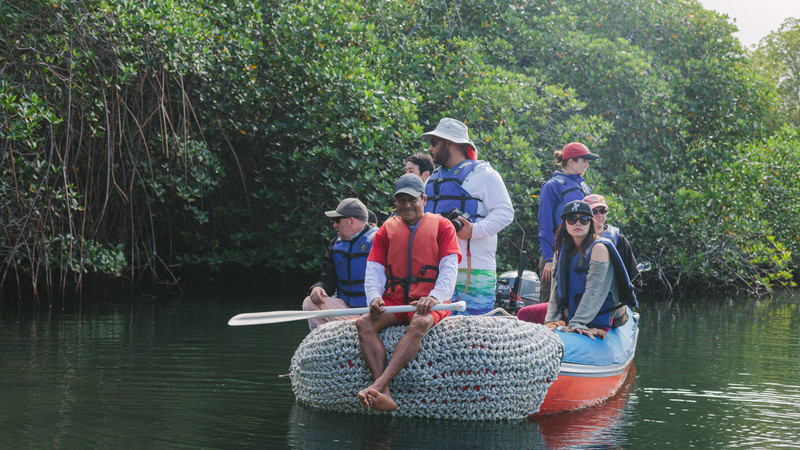
An Intrepid group exploring the islands with their local leader
We employ local leaders
The least talked about inhabitants of the Galapagos Islands – the people – are also some of the most important when it comes to protecting the islands. Having seen firsthand the impact that unsustainable activities can have on the islands and the benefits that sustainable tourism has on both the local economy and the environment means they are the best people to be charged with the islands’ tourism activities. That’s why our local leaders on our Galapagos trips are all galapaguenos (island locals).
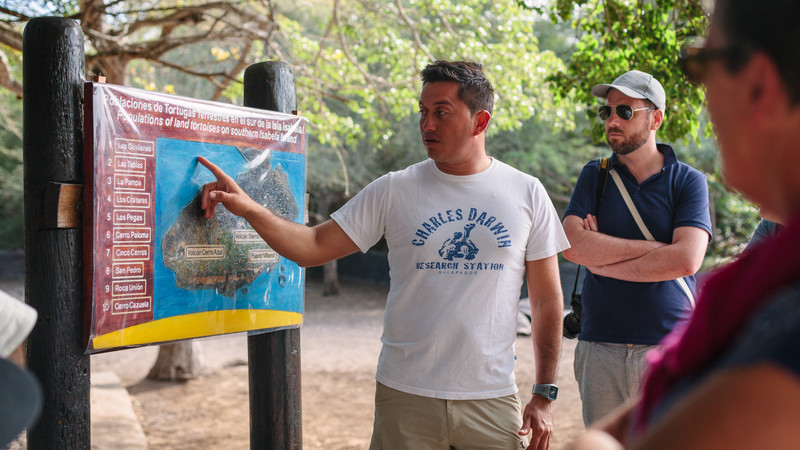
A local leader guiding travellers at the Charles Darwin Research Station
We often go by boat
Many of our trips to the Galapagos Islands are small ship sailing trips. In addition to being the best way to get around the islands, travel by boat is highly regulated in the Galapagos Islands. There are a limited number of boats that can visit the islands at one time, they can only dock at designated ports and they must adhere to certain eco-friendly standards. All of Intrepid’s boats adhere to these standards: we use biodegradable soap on-board, we change the sheets only twice per week to conserve water and we have a water tank on board, so guests can refill water bottles instead of purchasing disposable plastic water bottles.
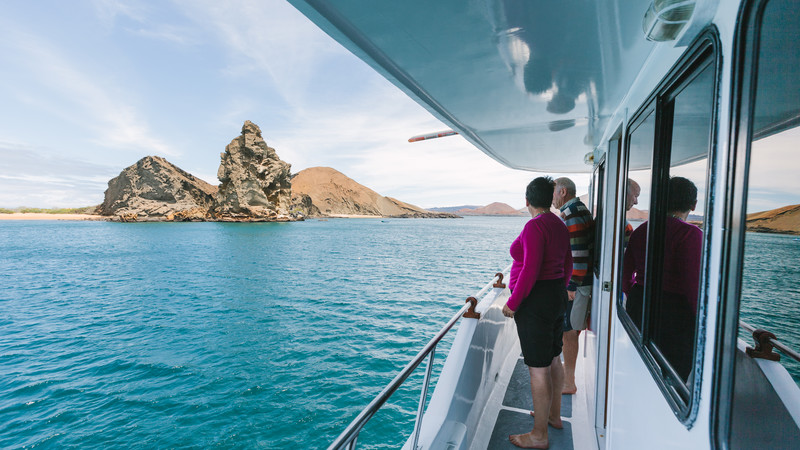
Travellers aboard one of Intrepid’s boats, the Daphne
We also offer land-based tours, which are less strictly regulated by the national park, but we do our best to lessen our impact wherever we can. We still carry water tanks so guests can refill their water bottles, we encourage travellers to reuse towels to conserve water and we only go to small, locally run accommodation and restaurants to ensure tourism dollars are going toward the local economy instead of large corporations.
We carbon offset all our trips
In addition to following the national park’s regulations, we are proud to ensure that all our trips are carbon-offset. Intrepid has actually been a carbon-neutral travel company since 2010. We’ve calculated the emissions from our offices and our trips and offset them by purchasing carbon credits and helping to fund initiatives like reforestation projects and wind farm projects around the world. Since 2010, we’ve offset over 358,000 tons of CO2 emissions.
READ MORE: HOW MUCH CARBON DO YOU EMIT? HERE’S WHAT YOU CAN DO ABOUT IT
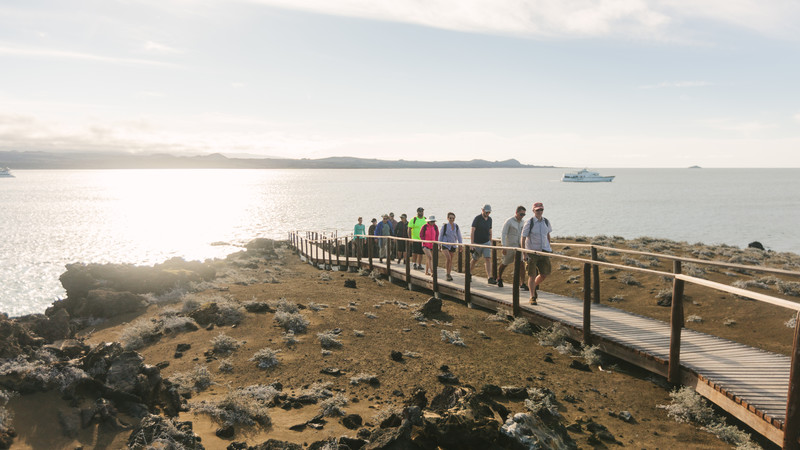
Hiking through the Galapagos Islands
We encourage our travellers to make sustainable choices
As a travel company, we recognise that we bear most of the responsibility for how sustainable our trips are. But when it comes to sustainability, every little bit counts, so we encourage our travellers to follow certain guidelines to minimise their impact. These guidelines include refilling reusable water bottles, using biodegradable sunscreen, reusing towels to conserve water and avoiding souvenirs that are made from animal products.
READ MORE: SMALL WAYS YOU CAN MAKE EVERY DAY EARTH DAY WHEN YOU TRAVEL
And, of course, we insist our travellers strictly abide by the national park’s rules, such as keeping a safe distance from the animals, not leaving any garbage behind, wiping your feet before re-entering the boat so as to reduce the risk of transporting invasive species, and not bringing seeds or nuts along on the trip (yes, believe it or not, your granola bar really could be a threat to the environment).
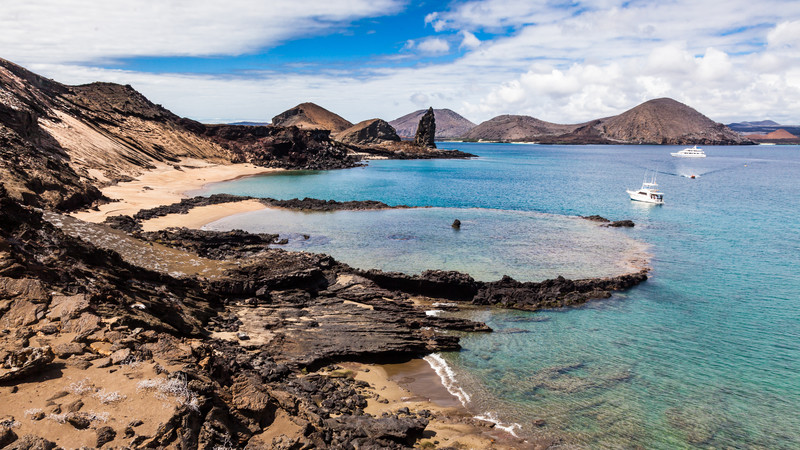
Small ships exploring the unusual landscapes of the islands
More travellers means more responsible tourism
Many locals are choosing to take jobs in the tourism industry. Since all tourism activities in the national park must adhere to extremely strict environmental regulations at the risk of being banned from the park or receiving heavy fines, this ensures the vast majority of jobs in tourism are responsible and eco-friendly.
RELATED READ: THE 6 RULES OF RESPONSIBLE TRAVEL
Tourist dollars help fund conservation projects
Each tourist that visits the park must pay an entrance fee – international tourists pay $100 and Ecuadorian tourists pay $6. There’s no doubt that money from international tourists has helped conservation efforts in the national park. Over 40% of this fee is funnelled into various projects in the park. Some projects that have benefitted from this funding include the eradication of invasive species like goats and dogs on certain islands and the repopulation of giant tortoises throughout the park.
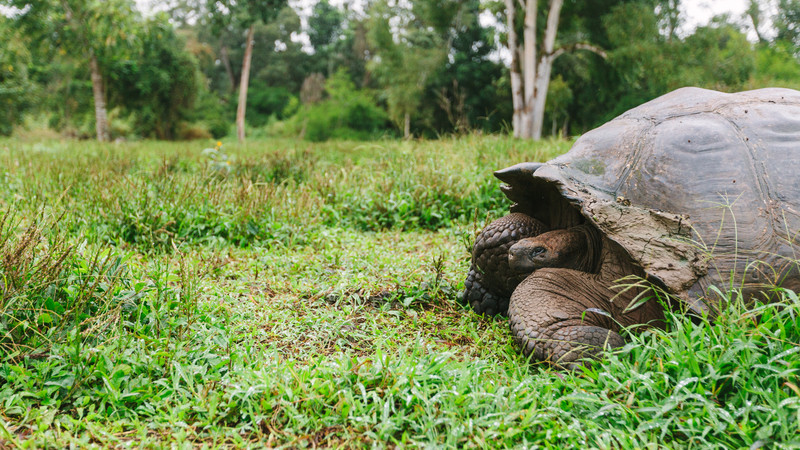
A giant tortoise in the Galapagos Islands
Tourism to the Galapagos undeniably has both positive and negative effects on the environment, but by choosing to travel responsibly, travellers can mitigate damage and help protect the ecosystem for years to come. This attitude of preservation has already helped the Galapagos: many invasive species have been eradicated and several species have been brought back from the brink of extinction. In fact, over 95% of the original biodiversity has been maintained.
While many travellers have an attitude of “see it before it’s gone” when it comes to the Galapagos Islands, we’ve adopted a more optimistic outlook. It is unlikely that tourism can or will ever be banned outright, so we must learn to work with this living, breathing ecosystem and do our best to protect it for the travellers that come after us and the animals and people that call this place home.
Learn more about how Intrepid Travel operates sustainably in over 100 countries around the world.

